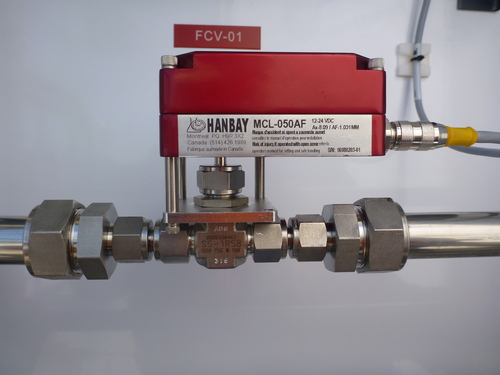Actuators are critical components that convert energy into motion, ensuring smooth and precise control of systems. Whether in robotics, manufacturing, or material handling, choosing between electric and pneumatic actuators can make a significant difference in performance, energy consumption, and operational efficiency. So, how do these two types of actuators differ, and when should you use each? Let’s break it down.
Types of Actuators: Electric vs. Pneumatic
Electric Actuators
Electric actuators operate by converting electrical energy into mechanical motion. They are typically powered by motors—either AC or DC—and can produce rotary or linear motion. These actuators are known for their precision, high control accuracy, and ability to handle complex automation tasks.
Subtypes of Electric Actuators:
- Rotary Electric Actuators: Provide rotational movement, often used in applications where precise angular motion is required.
- Linear Electric Actuators: Convert rotational motion into linear motion, ideal for positioning and lifting tasks in automation systems.
- Servo Actuators: Offer advanced control for highly accurate positioning, commonly used in robotics and automated machinery.
Pneumatic Actuators
Pneumatic actuators rely on compressed air to generate mechanical motion. They are widely used in industrial settings because of their simple design, fast response times, and ability to operate in hazardous environments without creating sparks.
Subtypes of Pneumatic Actuators:
- Single-Acting Pneumatic Actuators: Use air pressure to create motion in one direction, with a spring returning the actuator to its original position.
- Double-Acting Pneumatic Actuators: Use air pressure for movement in both directions, providing greater control and versatility.
- Diaphragm Pneumatic Actuators: Often found in valves, these actuators use air pressure to move a diaphragm, controlling fluid or gas flow in various industrial processes.
What’s the Difference Between Electric and Pneumatic Actuators?
When comparing electric and pneumatic actuators, several key differences stand out, each impacting their suitability for specific industrial automation applications.
1. Power Source
- Electric Actuators: Powered by electricity, these actuators require a reliable power source and are more suited to environments where electric control systems are already in place.
- Pneumatic Actuators: Powered by compressed air, pneumatic actuators are often used in systems where air compressors are readily available. They can operate in explosive or flammable environments, making them safer in certain conditions.
2. Precision and Control
- Electric Actuators: Offer superior precision and control, making them ideal for applications that require fine-tuned movement or variable speed. Servo and stepper motors can deliver precise positioning and repeatability, often critical in automated production lines or robotics.
- Pneumatic Actuators: Tend to offer less precision but excel in fast, repetitive motion. While they may lack the fine control of electric actuators, they’re highly effective in simple on/off operations such as valve control or material handling.
3. Speed and Force
- Electric Actuators: Generally slower than their pneumatic counterparts but can handle more complex tasks requiring controlled acceleration and deceleration.
- Pneumatic Actuators: Known for their speed, pneumatic actuators can generate rapid movement and deliver high force in short bursts, making them perfect for applications like punching, clamping, or lifting heavy loads.
4. Durability and Maintenance
- Electric Actuators: Typically require less maintenance than pneumatic systems since they have fewer moving parts and don’t rely on air compressors. However, they are more sensitive to harsh environmental conditions such as dust, moisture, or extreme temperatures.
- Pneumatic Actuators: Are robust and can function in challenging environments, including extreme temperatures, dust, and wet conditions. However, pneumatic systems require regular maintenance to ensure compressors and air lines remain leak-free and efficient.
5. Energy Efficiency
- Electric Actuators: Are often more energy-efficient, especially in applications requiring continuous operation or precise control. However, their energy consumption can spike during startup or when operating at high loads.
- Pneumatic Actuators: Tend to be less energy-efficient due to air compression losses, leaks, and the continuous operation of compressors. This makes them less ideal for applications where energy efficiency is a priority.
Making the Right Choice for Your Project
In the end, the choice between electric and pneumatic actuators comes down to the specific needs of your industrial automation project. Each has its own set of strengths and weaknesses, making them better suited to different environments and tasks.
Choose Electric Actuators If:
- Precision, control, and energy efficiency are priorities.
- Your system already incorporates electrical components and automation.
- You need flexibility in speed and motion profiles.
Choose Pneumatic Actuators If:
- You require fast, powerful movements in a repetitive cycle.
- You’re operating in a hazardous environment where sparks are a concern.
- Simple, robust, and cost-effective solutions are enough to meet your automation needs.
In industrial automation, there’s no one-size-fits-all solution. Understanding the differences between electric and pneumatic actuators helps you tailor your systems for maximum performance, whether you’re looking to enhance precision or speed, optimize energy use, or simply keep operations running in challenging environments.



